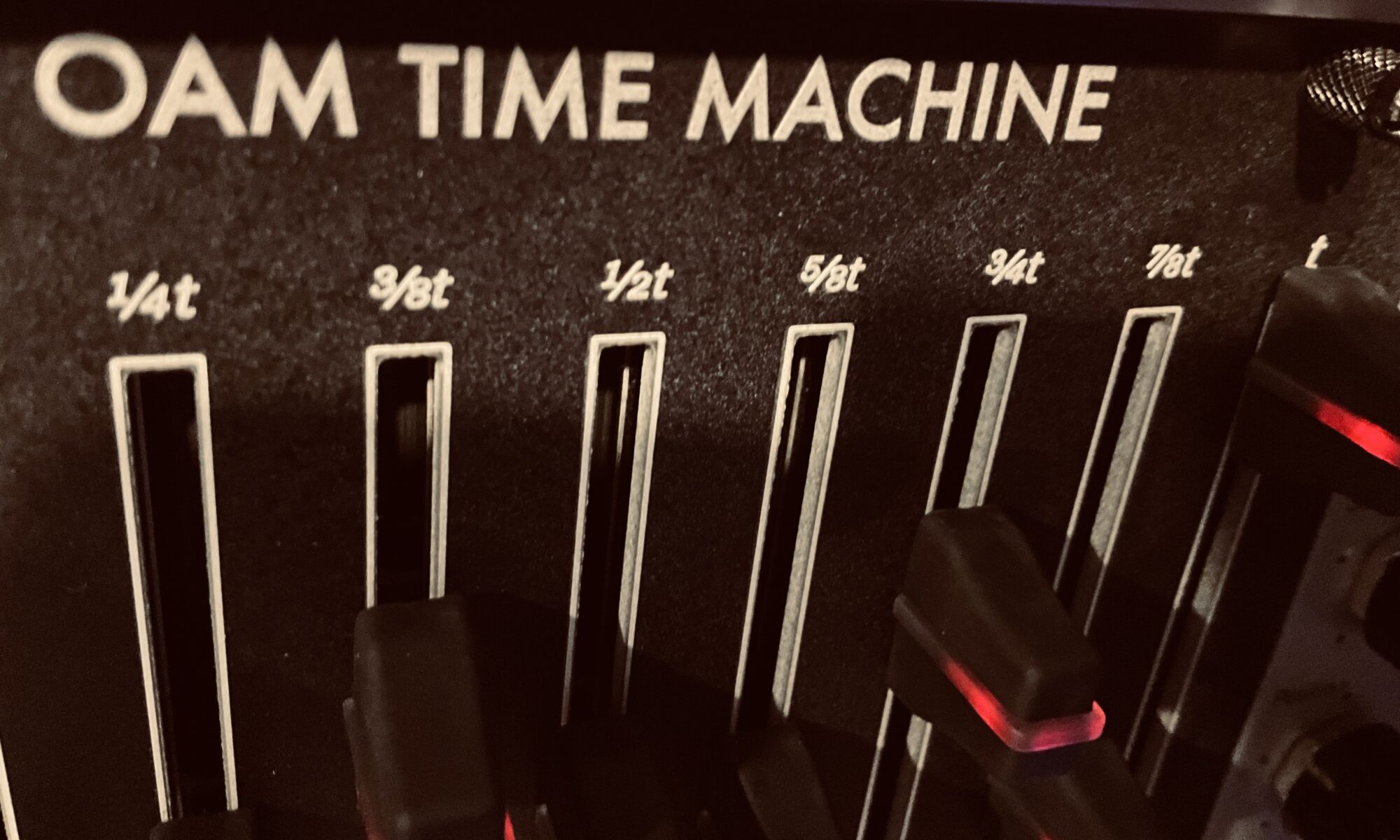I keep it no secret that I’m a certified delay junky. I love all kinds of delay from murky analog repeats, to the beautiful compression of tape delay, to pristine copies of digital delays. I dig them all. Even if my collection has shrunken significantly, at one time I had over 30 delay pedals, I still have a few delay pedals I consider choice, like the Oto Bim, Vongon Polyphrase, and the Free The Tone Future Factory FF-1Y Future Factory. I have dual Echofix EF-X2 tape delays. And it shouldn’t be a surprise that I have several Eurorack delay modules. From the mighty Verbos Multi-Delay Processor, to the Xaoc Devices Sarajewo, and the Qu-Bit Electronix Nautilus to the Venus Instruments Veno-Echo (plus yet more), I’m covered when it comes to Eurorack delays. But when the new Time Machine from Olivia Artz Modular was announced, I knew there was no way I could pass on it for too long before I hit “Add to Cart.” Due to a confluence of random events, I was informed by OAM within minutes of the Time Machine being released for sale at Perfect Circuit, and so was able to snag one quick without the ~6 week wait time if you order direct from OAM. I would have ordered one anyways, but bypassing the wait was a nice surprise, and moving their product through retail stores helps them get more retail orders and wider distribution.
When I imagined the Time Machine, I was imagining a stereo version of the Verbos Multi-Delay Processor. I’m sure much of the Time Machine was influenced by the MDP, from its looks to its multi-tap nature. And although it can certainly replicate some of the things the MDP does, the Time Machine is definitely something different, and highly rewarding. True stereo is a wonder to behold.
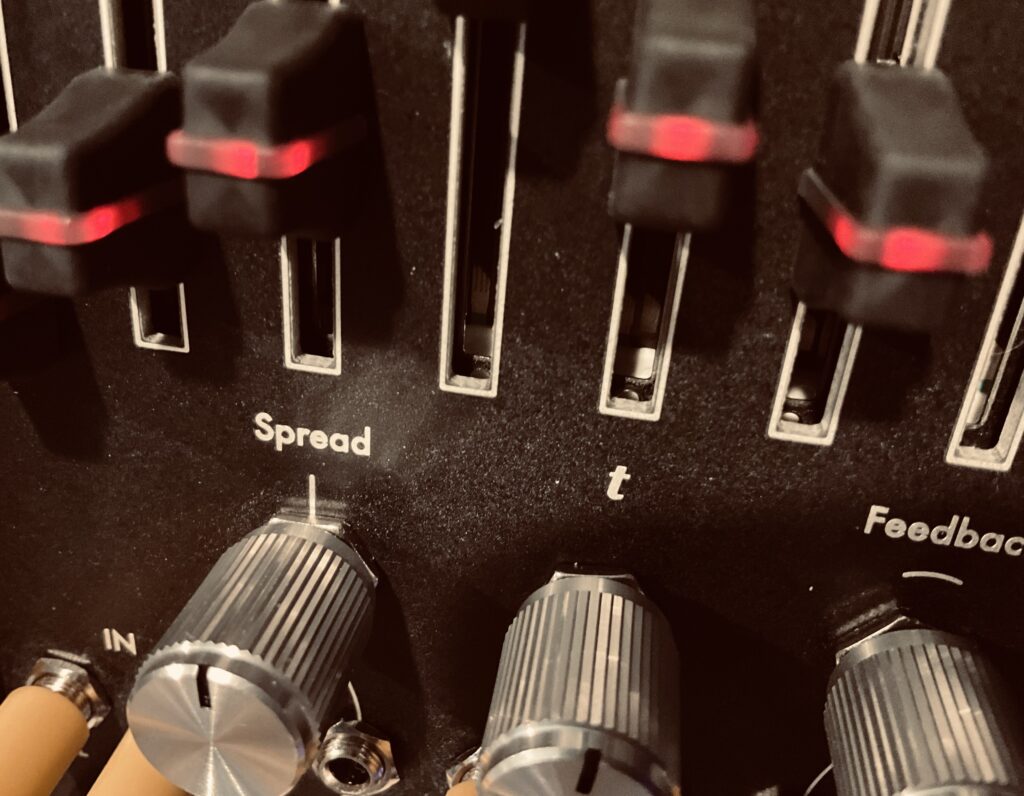
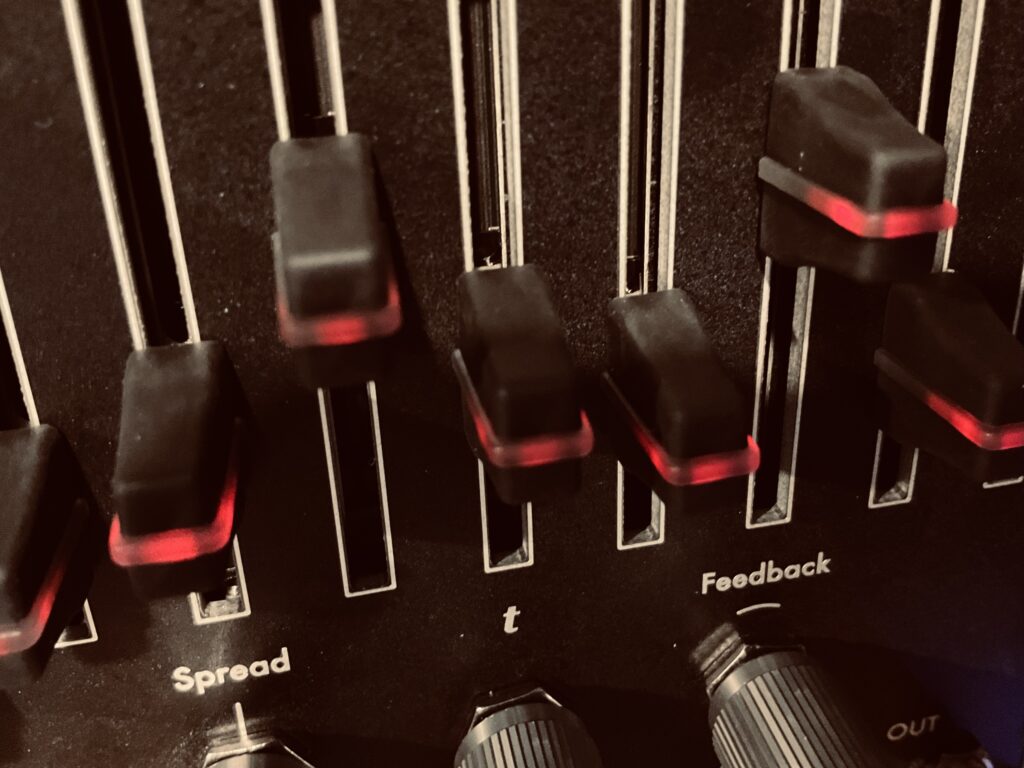
One thing I’ve learned about testing delays is that if you really want to hear its voice, you need to feed it short transient signals. This moves the dry signal more out of the way and allows the delay room to breathe and be heard on its own terms. I use these quick notes to test every delay I get. With Eurorack, that test is almost always short pings in an LPG in order to see what’s its limits are. How clean (or dirty) are the repeats? How does the feedback behave? Does it do The Thing?1 How do the taps behave? How does the feedback go into entropy? This simple test allows me to really evaluate how a delay sounds and behaves.
This er of this patch is sets of sparse plucks of the Bard Synthesizers VTG (Vacuum Tube Gate – it sounds wonderful, if not quite like a traditional LPG). These plucks are created using the Humble Audio Quad Operator, which has the 2 waves being modulated by The Hypster, and one of the Ratios modulated by the Bindubba, into the LPG’s two input channels. The gates are hit by envelopes created by the CalSynth Changes (MI Stages), which is triggered by chaos-derived gates of the Stochaos. From the VTG, it goes straight to the matrix mixer, and onto the Time Machine.

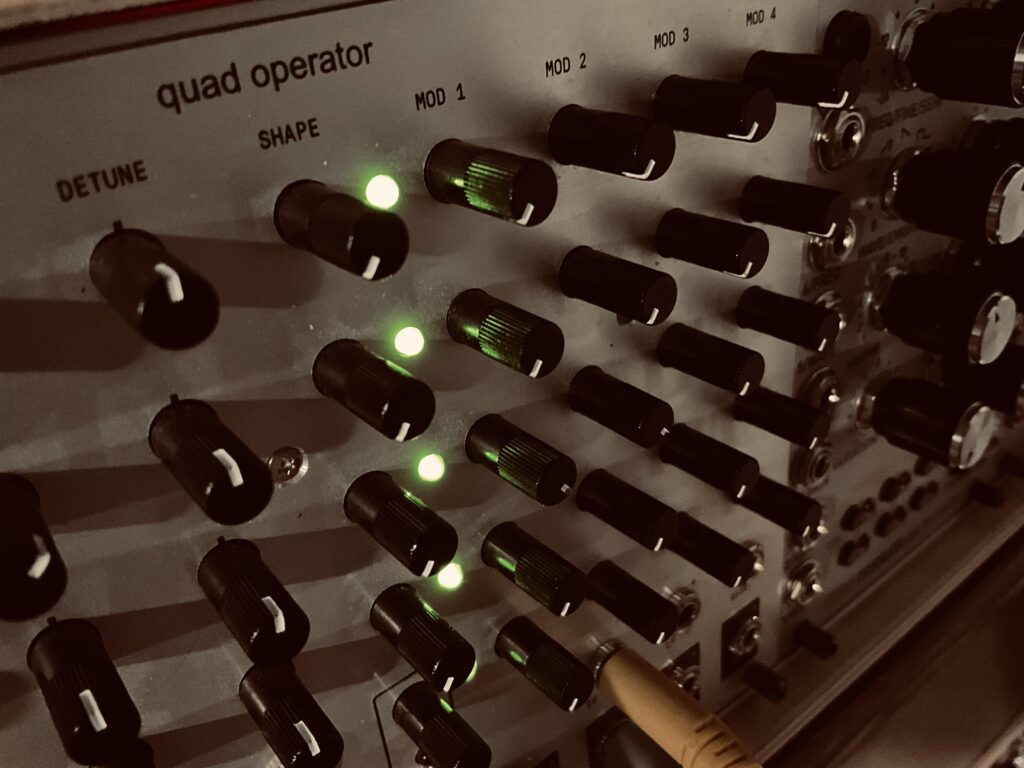

After tweaking the Time Machine faders to get a delay pattern I really liked, I was pleased with what was happening, but I wanted more. Delays are cool and all, but dancing repeats do not make a track. After a second it clicked: “Panharmonium really likes short transients!” Although I wasn’t at all sure what I might get out of the Panharmonium, I thought it would be interesting, and that assumption was correct. After wiggling some knobs and adjusting the sampling interval (using a division of the clock used for the Time Machine), what I got was far more than interesting. It was the best thing I’ve heard from the Panharmonium in my own practice. A sort of distorted cello/upright bass sound that really fills in the space, and is harmonically relevant to the repeats that form the base of the track. Even if you can’t hear the repeats themselves through the Panharmonium, the sound of the it is a direct transliteration of those repeats in the form of resynthesis. Without the repeats, the Panharmonium isn’t making any sound. Since the Panharmonium sounded almost like something you’d hear in a sludge metal or Post-Rock context, I decided to also route the Panharmonium output to the Bizarre Jezabel Mimosa and really give it some drive, which was a perfect choice.
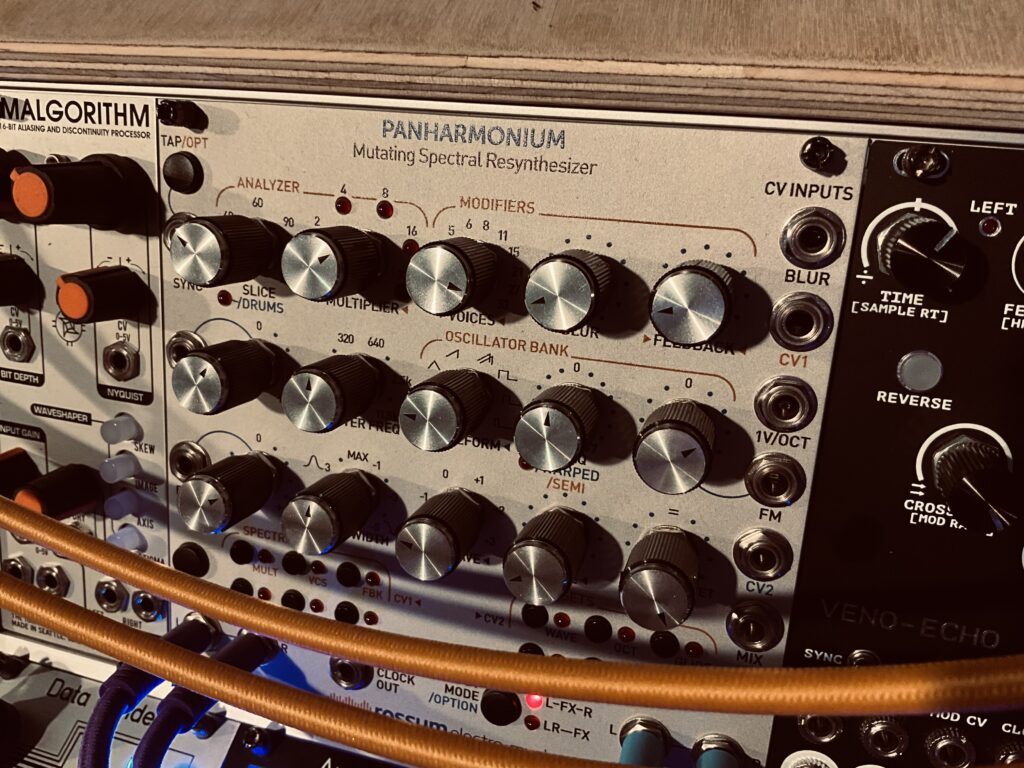
The patch is finished off with some reverb courtesy of the Oto Bam Ambient algorithm.
Modules Used:
Humble Audio Quad Operator
Bard Synthesizers VTG
Nonlinear Circuits Stochaos
Nonlinearcircuits The Hypster
CalSynth uO_C
CalSynth Changes (MI Stages)
Olivia Artz Modular Time Machine
Xaoc Devices Batumi II
Xaoc Devices Samara II
Rossum Electro-Music Panharmonium
Bizarre Jezabel Mimosa
AI Synthesis 018 Stereo Matrix Mixer
Knob Farm Ferry
Oto Bam
Improvised and recorded in 1 take on iPad in AUM via the Expert Sleepers ES-9.
__________
- When it can sit on the edge of feedback without running away uncontrollably. It’s even better when it can do that at a low volume, while still allowing your repeats to go through at full volume. The EF-X2 is masterful at this trick.

